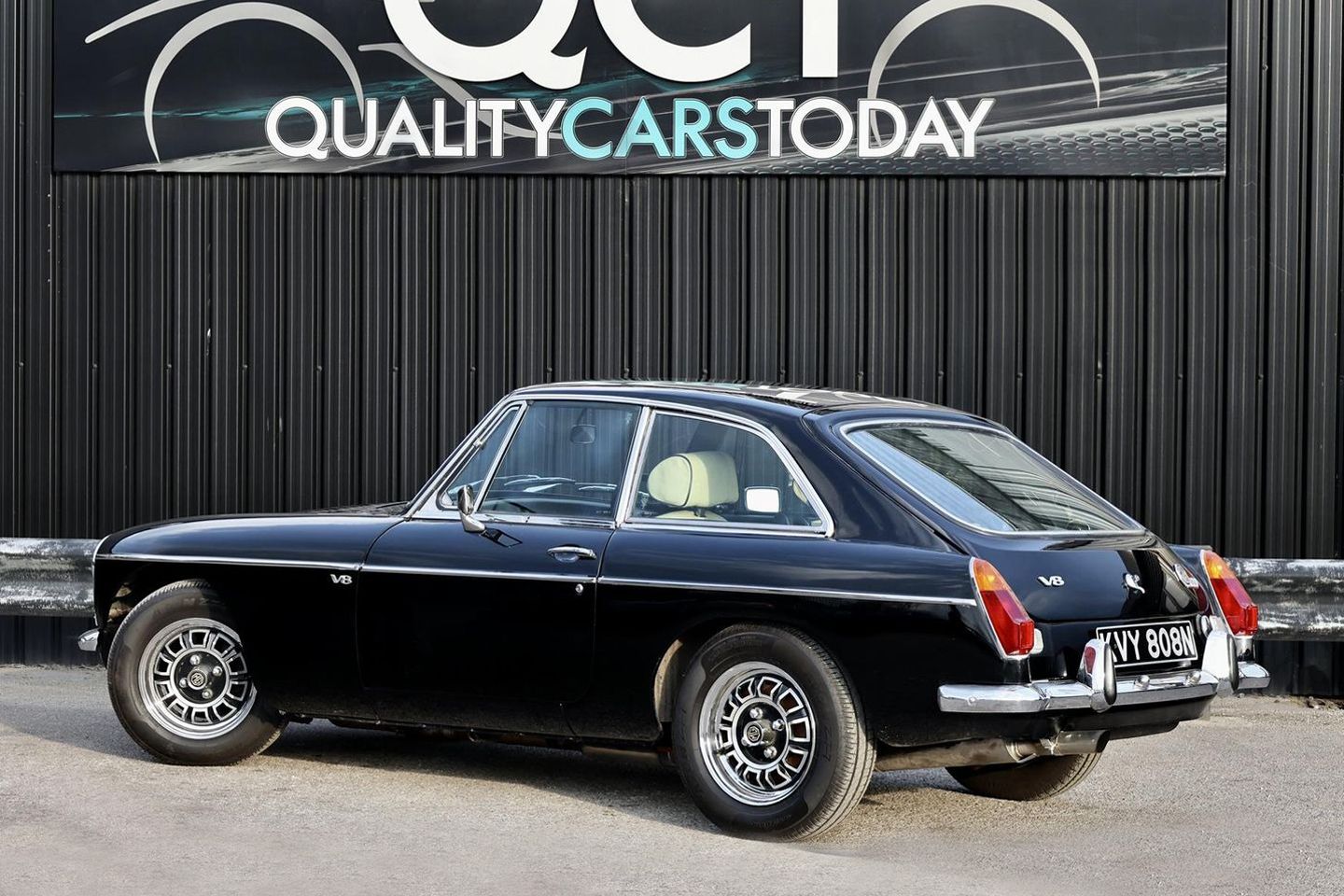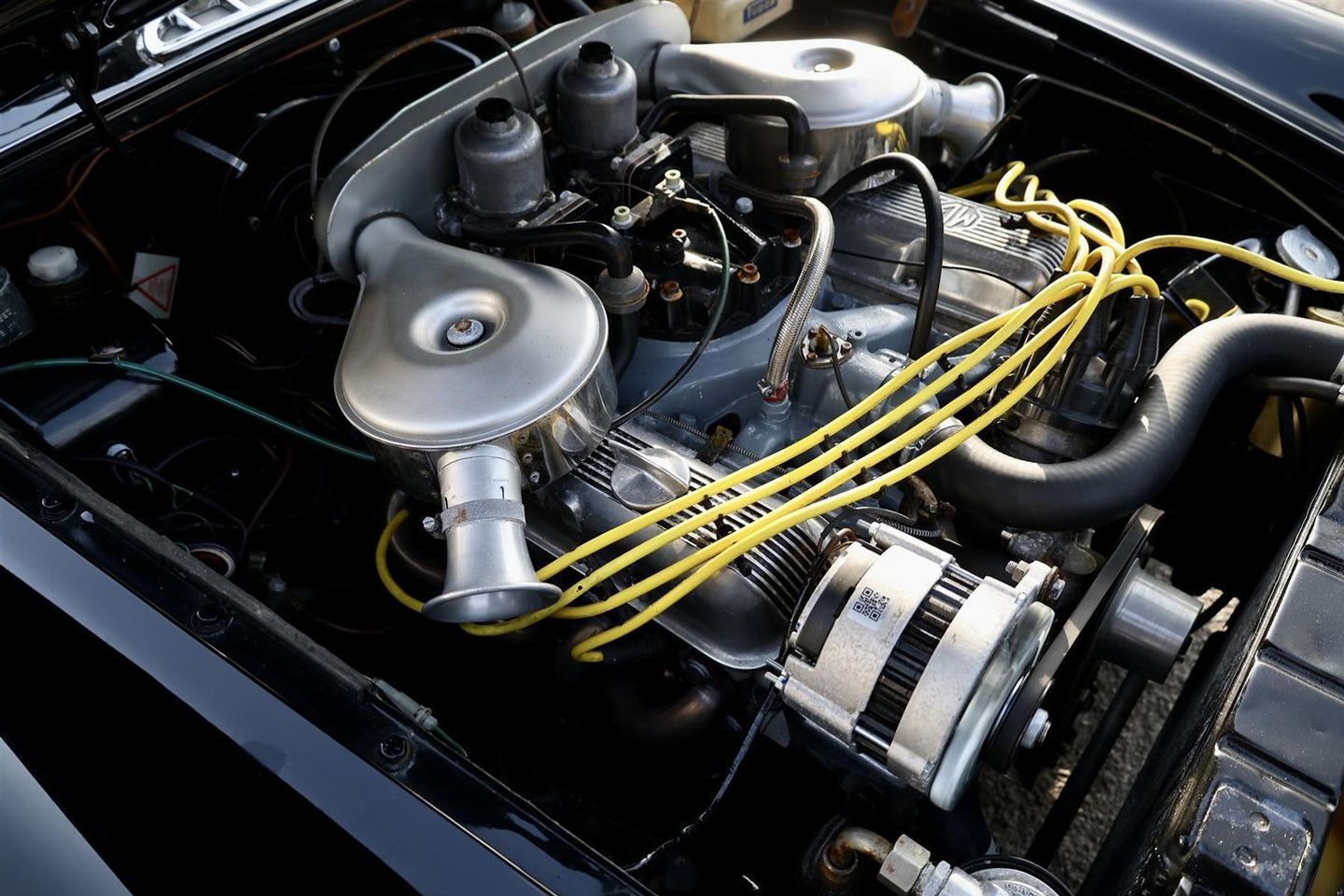MGB GT V8 | Spotted
We all remember Bs like this as 30-year-old classics - now they're hitting a half century

It’s great to have classic MGs back in contemporary conversation thanks to companies like Frontline. If you’re anything like us, an MG A probably hadn’t been given much thought for a long time; then along comes the Factory Edition and it’s hard to think about very much else. Because it’s brilliant. Similarly with the Bs; there’s little to make MGs great again like beautifully redone bodies and screaming Duratecs.
But a Frontline MG doesn’t come cheap - lavishing hours of expertise on a rebuild of anything never is. What’s still rather more affordable is a plain old MGB; despite production having ended more than 40 years ago, and a good number having succumbed to rot over the years, a decent amount remain. They really did sell that many. And unlike seemingly every other classic car, the B remains cheap - there are four-cylinder cars from five grand. That just doesn’t happen elsewhere. And if a B has made it to 50 years old, it mustn’t be too bad.
Oh sure, anyone accustomed to cars from the past 30 years will be in for a bit of a shock (assuming they fit), but the appeal as a starter classic is plain to see: pretty, simple to fix, manual, and with a huge, knowledgeable community behind them. Plus there’s a V8 if you fancy…


This one, of course, won’t be as racy as the firebreather in a Frontline LE60. Assuming the 3.5 V8 here is standard, it once mustered something like 140hp. Which isn’t very much, but then it’s not very much car either. Those after something more potent shouldn’t have to look very far; every mechanic and his dog must know about the Rover V8. There’s plenty of space in that engine bay - if a 4.8 version can be made to fit, then there are options aplenty.
Chassis 1761 is believed to be one of the last chrome bumpered Bs, registered in June 1975. Probably the most interesting bit of its past is the fact that the third owner owned the MG for almost 30 years, keeping the keys from 1984 until 2013. In that time the car was restored as well, with new sills, floors, wings, doors and arches all fitted. Accordingly, the B still looks great to this day. As it’s aged, presumably this has been kept from the worst weather and therefore its vulnerable areas better protected. Rust is always something to be aware of, but there’s plenty to be encouraged by here. Along with a smart colourway, the wheels and tyres look good, as does the engine bay. There’s plenty of history to accompany it.
It’d likely be a lovely accompaniment to a sunny Sunday as is, V8 burbling and windows down. Or there’s scope to sharpen the experience further, with better suspension and brakes to really bring a B to life. After all, there might be some budget remaining when the car itself is little more than £20k…
SPECIFICATION | MGB GT V8
Engine: 3,528cc, V8
Transmission: 4-speed manual, rear-wheel drive
Power (hp): 139@5,250rpm
Torque (lb ft): 193@2,900rpm
MPG: Maybe
CO2: Nope
First registered: 1975
Recorded mileage: 31,582
Price new: N/A
Yours for: £21,995

I recently had a 1992 Ford F-350 that had a 7.5 V8 which only made 235hp. I still don't understand how that is possible.
137bhp isn't much for a 3.5 litre engine, but it was a healthy amount for a car weighing 1100kg in the early 70s. I think 0-60 was about 7.5 seconds which is within a second or so of an E-type and about the same as a (non-Sprint) Elan.
I recently had a 1992 Ford F-350 that had a 7.5 V8 which only made 235hp. I still don't understand how that is possible.

From memory these were actually 135bhp, so just over 38bhp / litre.
This has 4 engines:
Each is a 19-litre turbodiesel six, producing 750bhp. That's just over 39bhp / litre. They are expected to cover millions of miles, with regular servicing.
The point is, engines are designed for different purposes. While a F1 engine will rev to, what, 15,000 rpm, it will need rebuilding after a relatively low mileage. The Nissan diesel engine in old London taxis has poor performance, but would routinely be expected to cover 300,000 miles reliably.
Rover (more accurately, Buick) evidently did not design the V8 for outright power or performance. They designed it for reliable torque, as appreciated by the builders of thousands of road, race and off-road cars for over half a century. Do you honestly believe their engineers couldn't think of a way to make it more powerful?
What MG should have done was not use the engine in Range Rover tune.
I recently had a 1992 Ford F-350 that had a 7.5 V8 which only made 235hp. I still don't understand how that is possible.
Seems a good price as well.
btw you also see some for sale with a complete new body for not crazy money, or completely renewed, body interior and all, ok those are a bit more expensive, but nicely priced compared to some restomod cars.
but then it seems those had a V8 swap afterwards.
no idea how such roadster handled the V8 torque though... no idea the NM/chassis (forgot the name) the MGB roadster has compared to the GT.
but then it seems those had a V8 swap afterwards.
no idea how such roadster handled the V8 torque though... no idea the NM/chassis (forgot the name) the MGB roadster has compared to the GT.
Both the Chimera and the MGB V8 appeal to me, but in rather different ways.
Gassing Station | General Gassing | Top of Page | What's New | My Stuff






